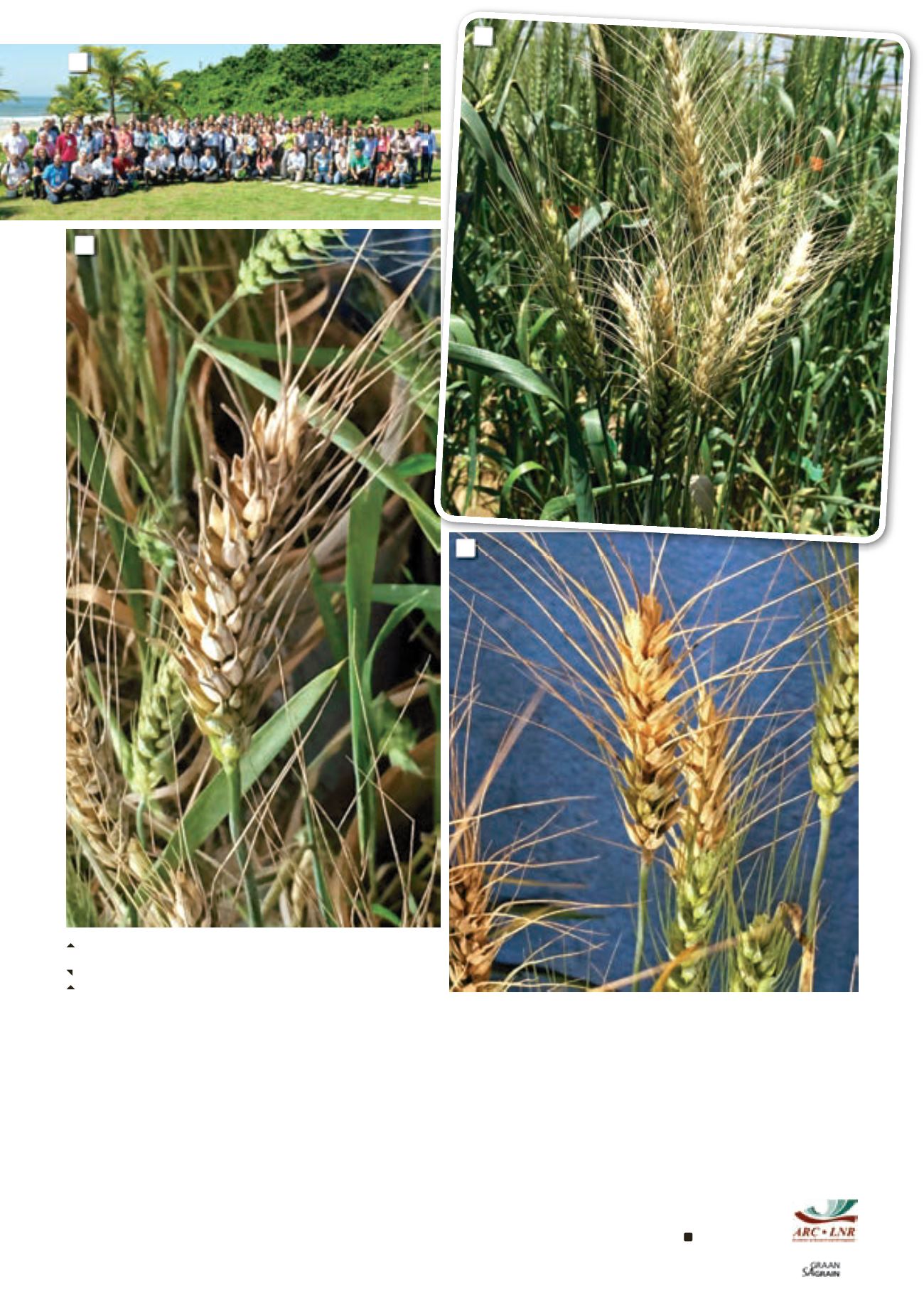

91
August 2016
chaffy, shrivelled and low in test weight,
similar to that of Fusarium head blight. In
some cases, up to 100% yield loss may oc-
cur. The wheat blast disease is seed-borne.
Grasses may also be an alternative host for
the disease. This disease of wheat has the
potential to be devastating, even been con-
sidered as a potential biological weapon to
cripple economies.
The requirements for wheat blast disease
development are very warm, wet and humid
conditions. Long periods of leaf wetness
are required for optimal disease devel-
opment. Areas that might be at risk in
South Africa includes the cooler and warm-
er irrigation areas since temperature and
humidity play a big role in the occurrence
of wheat blast.
Wheat blast was first identified in Brazil in
1985. It has slowly spread through most
countries in South America and into the
USA. However, last year, the first report
in Asia was made as it had spread to
Bangladesh. Bangladesh is a net importer
(3 million tons) of wheat.
The wheat blast epidemic in Bangladesh
affected 15% of the area planted. This sig-
nificantly increased the need to import
more wheat grain. Only limited control can
be achieved with the application of fungi-
cides. There are very few known or identi-
fied resistance genes in wheat. The disease
can devastate an entire field in three to five
days after signs have first been noted.
Research staff of ARC-SGI learnt a lot
during the visit to Brazil and will now ap-
ply the knowledge gained to improve their
research outputs and create awareness
around the dangers posed
by Fusarium head blight and
wheat blast.
1: Attendees of the 5th International Symposium on Fusarium head
blight and the 2nd Wheat Blast Workshop.
2: Disease signs of Fusarium head blight on wheat.
3a and 3b: Disease signs of wheat blast on wheat.
1
3a
3b
2

















